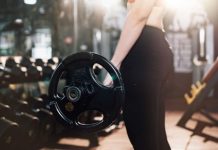Recovery after training is a key part of injury-free progress. As we get older, it becomes more and more important to find efficient recovery methods.
Recovery methods have been around as long as training itself, whether it is a few beers and sleep or contrast showers and sports massage. Proper recovery makes all the difference because it can get you back into the gym faster and injury-free.
For the professional sportsman, recovery is easy, with both time and resources being available. However, for the majority of trainees, both money and time are factors. There are a few methods that don’t cost much and don’t need all day which are perfect for the average joe.
Table of Contents
Foam Rolling. The Cheapest Way to Feel Better
As someone who always saw any sort of “gadget” as a way to part me and my money, it took a long time for me to test foam rolling. After noticing that my hips were taking longer and longer to get loose before squatting and everything was generally feeling sore for longer after training, I finally bit the bullet and gave foam rolling a go.
People will tell you that it isn’t miraculous and that it takes time for the effect to be noticed, but from personal experience, my hips felt better after only a few sessions of rolling the IT band down the outside of the thigh and the piriformis (backside).
Given that a foam roller only costs 10-20 dollars and a good session can be done daily in ten minutes, there is only one reason to hold back. Initially, it will hurt! Putting a hard rubber ball under the glutes and rolling on it will bring tears to the eyes of the hardest competitor. Stick with it. After a few sessions the pain becomes more bearable and the results speak for themselves.
Contrast Showers for Faster Recovery
This is another low-budget solution that is worth trying. Like foam rolling, however, contrast showers are not a great deal of fun. The principle is simple and easy to apply. Simply hit the shower after exercising and alternate between hot and cold.
About 30 seconds of each for 8-10 minutes is a good starting point. The key here is that hot and cold mean exactly that. Hot should be as hot as bearable and cold should be unpleasant. This is not a fun 10 minutes but will decrease recovery time considerably.
Light Workouts the Next Day
This can seem somewhat counterintuitive, but doing a very similar movement pattern the day after heavy training is very beneficial. After a heavy squatting session, the last thing most people want to do the next day is squat again, but give it a try, it works. This doesn’t involve hitting the gym again because doing a few sets of 15-20 bodyweight squats will suffice. This seems to get blood moving through the muscles again and accelerate the recovery process and cut short muscular soreness.
The options for recovery are many and varied. However, these options don’t need to cost a fortune or take all day in order to be effective.



